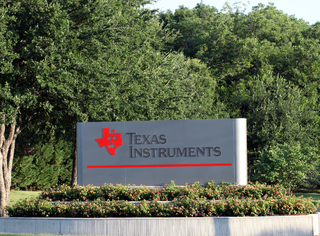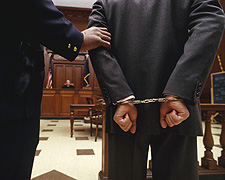In a patent or patent application, the claims define, in technical terms, the extent, i.e. the scope, of the protection conferred by a patent, or the protection sought in a patent application. In other words, the purpose of the claims is to define which subject-matter is protected by the patent. This is termed as the "notice function" of a patent claim—to warn others of what they must not do if they are to avoid infringement liability. The claims are of the utmost importance both during prosecution and litigation alike.
The inventive step and non-obviousness reflect a general patentability requirement present in most patent laws, according to which an invention should be sufficiently inventive—i.e., non-obvious—in order to be patented. In other words, "[the] nonobviousness principle asks whether the invention is an adequate distance beyond or above the state of the art".
In United States patent law, the on-sale bar is a limitation on patentability codified at 35 U.S.C. § 102. It provides that an invention cannot be patented if it has been for sale for over one year prior to the patent filing.
The exhaustion doctrine, also referred to as the first sale doctrine, is a U.S. common law patent doctrine that limits the extent to which patent holders can control an individual article of a patented product after a so-called authorized sale. Under the doctrine, once an authorized sale of a patented article occurs, the patent holder's exclusive rights to control the use and sale of that article are said to be "exhausted," and the purchaser is free to use or resell that article without further restraint from patent law. However, under the repair and reconstruction doctrine, the patent owner retains the right to exclude purchasers of the articles from making the patented invention anew, unless it is specifically authorized by the patentee to do so.
Graham v. John Deere Co., 383 U.S. 1 (1966), was a case in which the United States Supreme Court clarified the nonobviousness requirement in United States patent law, set forth in 35 U.S.C. § 103.
City of Elizabeth v. American Nicholson Pavement Co., 97 U.S. 126 (1878), was a case in which the Supreme Court of the United States held that while the public use of an invention more than one year prior to the inventor's application for a patent normally causes the inventor to lose his right to a patent, there is an exception to this rule for public uses for experimental purposes.
Egbert v. Lippmann, 104 U.S. 333 (1881), was a case in which the Supreme Court of the United States held that public use of an invention bars the patenting of it. The Court's ruling was colored by its view that the inventor had forfeited his right to patent the invention by "sleeping on his rights" while others commercialized the technology.
General Talking Pictures Corp. v. Western Electric Co., 304 U.S. 175 (1938), was a case that the Supreme Court of the United States decided in 1938. The decision upheld so-called field-of-use limitations in patent licenses: it held that the limitations were enforceable in a patent infringement suit in federal court against the licensee and those acting in concert with it—for example, a customer that knowingly buys a patented product from the licensee that is outside the scope of the license.
Quanta Computer, Inc. v. LG Electronics, Inc., 553 U.S. 617 (2008), is a decision of the United States Supreme Court in which the Court reaffirmed the validity of the patent exhaustion doctrine, and in doing so made uncertain the continuing precedential value of a line of decisions in the Federal Circuit that had sought to limit Supreme Court exhaustion doctrine decisions to their facts and to require a so-called "rule of reason" analysis of all post-sale restrictions other than tie-ins and price fixes. In the course of restating the patent exhaustion doctrine, the Court held that the exhaustion doctrine is triggered by, among other things, an authorized sale of a component when the only reasonable and intended use of the component is to practice the patent and the component substantially embodies the patented invention by embodying its essential features. The Court also overturned, in passing, the part of decision below that held that the exhaustion doctrine was limited to product claims and did not apply to method claims.
The exhausted combination doctrine, also referred to as the doctrine of theLincoln Engineeringcase, is the doctrine of U.S. patent law that when an inventor invents a new, unobvious device and seeks to patent not merely the new device but also the combination of the new device with a known, conventional device with which the new device cooperates in the conventional and predictable way in which devices of those types have previously cooperated, the combination is unpatentable as an "exhausted combination" or "old combination". The doctrine is also termed the doctrine of the Lincoln Engineering case because the United States Supreme Court explained the doctrine in its decision in Lincoln Engineering Co. v. Stewart-Warner Corp.
United States v. Univis Lens Co., 316 U.S. 241 (1942), is a decision of the United States Supreme Court explaining the exhaustion doctrine and applying it to find an antitrust violation because Univis's ownership of patents did not exclude its restrictive practices from the antitrust laws. The Univis case stands for the proposition that when an article sold by a patent holder or one whom it has authorized to sell it embodies the essential features of a patented invention, the effect of the sale is to terminate any right of the patent holder under patent law to control the purchaser's further disposition or use of the article itself and of articles into which it is incorporated as a component or precursor.

Netscape Communications Corp. v. Konrad, 295 F.3d 1315, was a decision of the United States Court of Appeals for the Federal Circuit. It affirmed that public use or commercialization of an invention more than one year prior to the filing date will cost the inventor his patent rights. The inventor in this case was Allan M. Konrad, a Lawrence Berkeley National Laboratory employee who devised and implemented a method for accessing and searching data objects stored on a remote computer. Netscape moved to invalidate Konrad's patents in U.S. district court immediately after Konrad filed a patent infringement suit against Netscape customers. The district court concluded that Konrad's patents were invalid because they did not meet the public-use and on-sale bar eligibility criteria of 35 U.S.C. § 102b. In particular, the district court found that Konrad (1) placed his invention in the public domain by demonstrating it to others without a confidentiality agreement and (2) tried to sell it to other legal entities, both more than one year before he filed for the patent. The appeals court, upon review, affirmed the district court decision for the same reasons.
Stanford University v. Roche Molecular Systems, Inc., 563 U.S. 776 (2011), was a United States Supreme Court case in which the Court held that title in a patented invention vests first in the inventor, even if the inventor is a researcher at a federally funded lab subject to the 1980 Bayh–Dole Act. The judges affirmed the common understanding of U.S. constitutional law that inventors originally own inventions they make, and contractual obligations to assign those rights to third parties are secondary.
Ex parte Wood, 22 U.S. 603 (1824), was a United States Supreme Court case in which the Court held that a patent could not be repealed based on summary proceedings without the opportunity for a jury trial. The case exemplifies a tradition in early 19th century United States patent caselaw in which patents were regarded specifically as an absolute property right to exclusive use of the invention, rather than requiring a balancing between public and private interests.
United States v. Bell Telephone Co., 167 U.S. 224 (1897), is an 1897 decision of the United States Supreme Court that held that the United States lacked standing to challenge the validity of its issued patents “on the mere ground of error of judgment” in issuing them. The United States had standing to seek to invalidate patents, however, on grounds of fraudulent procurement and also as a defense to a charge of patent infringement. The decision operated for many decades as a bar to government efforts to seek invalidation of patents that it considered spurious until the Supreme Court limited Bell Telephone, first to a limited extent in United States v. United States Gypsum Co., and then more broadly in United States v. Glaxo Group Ltd.

Ariosa Diagnostics, Inc. v. Sequenom, Inc., 788 F.3d 1371, was a controversial decision of the Federal Circuit in which the court applied the Mayo v. Prometheus test to invalidate as patent-ineligible a patent said to "solve[ ] a very practical problem accessing fetal DNA without creating a major health risk for the unborn child." In December 2015, the Federal Circuit denied a motion for en banc rehearing, with several members of the court filing opinions urging Supreme Court review. On June 27, 2016, the Supreme Court of the United States denied Sequenom's petition for a writ of certiorari.
Impression Products, Inc. v. Lexmark International, Inc., 581 U.S. ___ (2017), is a decision of the Supreme Court of the United States on the exhaustion doctrine in patent law in which the Court held that after the sale of a patented item, the patent holder cannot sue for patent infringement relating to further use of that item, even when in violation of a contract with a customer or imported from outside the United States. The case concerned a patent infringement lawsuit brought by Lexmark against Impression Products, Inc., which bought used ink cartridges, refilled them, replaced a microchip on the cartridge to circumvent a digital rights management scheme, and then resold them. Lexmark argued that as they own several patents related to the ink cartridges, Impression Products was violating their patent rights. The U.S. Supreme Court, reversing a 2016 decision of the Federal Circuit, held that the exhaustion doctrine prevented Lexmark's patent infringement lawsuit, although Lexmark could enforce restrictions on use or resale of its contracts with direct purchasers under regular contract law. Besides printer and ink manufacturers, the decision of the case could affect the markets of high tech consumer goods and prescription drugs.
Pennock v. Dialogue, 27 U.S. 1 (1829), was a United States Supreme Court decision in which the Court held invalid a patent on a method of making hose, because the inventor had commercially exploited the invention for years before filing the patent application. The case has been cited many times for the proposition that the U.S. patent system was not established for the purpose of enriching inventors or their financiers but rather for the purpose of furthering the public interest by stimulating technological progress.








